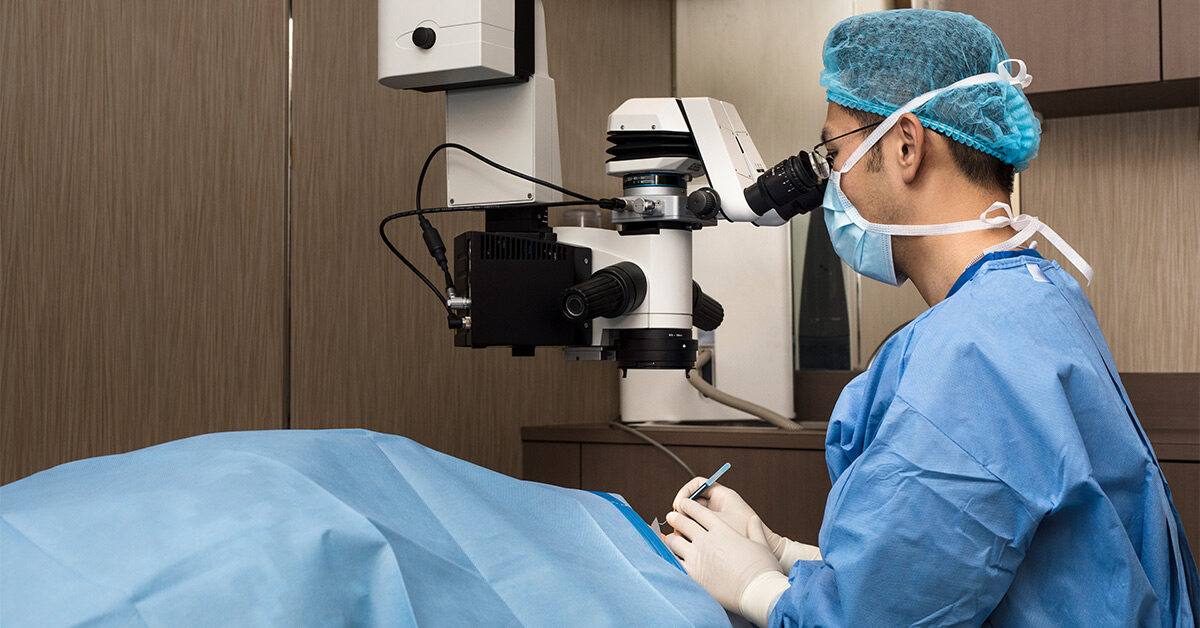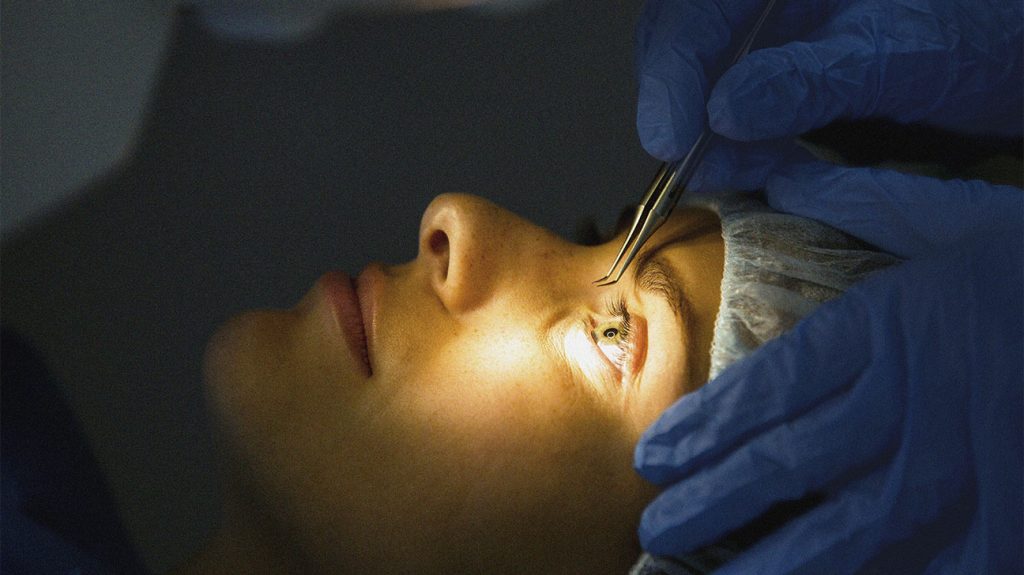Ophthalmology (eye surgery LASIK), also known as eye surgery LASIK (laser in-situ keratomileusis), is a very successful and popular operation that is used to repair vision abnormalities such as nearsightedness (myopia), farsightedness (hyperopia), and astigmatism. Eye surgery Lasik is a type of laser surgery that uses a laser to address vision disorders (cylinder power). It is changing the way we perceive the world since it allows us to see without the use of spectacles.

It has always been necessary to rely on alternative corrective procedures, such as wearing prescription eyeglasses or contact lenses, in the past and in the present. These treatments are successful, but they are also expensive and time-consuming, and they are also fragile in the long term, necessitating the user to make a number of sacrifices.
Despite the fact that lasers have some constraints, such as the need that the user is older than 18 years, to attain outstanding outcomes, you must be in excellent medical condition. Your refractive error, as well as other variables, will influence your outcomes. With refractive LASIK eye surgery, those who have mild nearsightedness with or without astigmatism (cylinder power) are more likely to have a positive outcome than others.
What is the surgery’s procedure?
There are two types of laser eye surgery that are commercially accessible. PRK and eye surgery LASIK are two different procedures; PRK is an earlier variant, whilst eye surgery LASIK was created later. The shape of the Cornea is primarily responsible for all flaws in the refractive power of the eye. A cold beam of ultraviolet light with a certain wavelength (usually 193 nanometers) is produced by the excimer laser during eye surgery LASIK, allowing the corneal tissue to be precisely modulated.
In order for light rays to concentrate properly on to the retina for clear vision, the surface of the cornea must be altered in order for this to happen effectively. By flattening the cornea, lasers can cure nearsightedness, whereas lasers can repair farsightedness by making the cornea steeper. In addition, because laser eye surgery is so precise, it guarantees that the adjustments are completed accurately and in a sterile environment, therefore reducing the danger of infection.
Lasers are equipped with eye trackers, which aid in the appropriate concentration of laser light on the center of the cornea and the visual axis, resulting in a superior outcome. Despite the fact that the laser accomplishes most of the work in less than a minute, the laser surgery technique itself takes less than 10 minutes for each eye. It usually takes a week to a few weeks for total vision stabilization to occur, however, your vision should be substantially normal within a day or two of treatment.
Is having laser eye surgery a painful procedure?
When it comes to any type of surgery, individuals are extremely concerned about the pain they may experience. When it comes to our eyes, our dread multiplies by a factor of ten. The good news is that eye surgery LASIK is completely painless. Anesthesia eye drops will be inserted into both of your eyes by your surgeon just before the start of your eye surgery LASIK. Despite the fact that you may still feel a little pressure throughout the treatment, you will not experience any discomfort.
The fact is that some little pain, like soreness and a scratchy feeling, is to be expected following your eye surgery LASIK or PRK laser eye surgery procedure. After that, the cornea will be allowed time to recover on its own. It is possible that you could have some discomfort throughout the healing process, but this will pass fast.
Following the treatment, your eyes may feel itchy, have a burning feeling, or you may have the sense that something is stuck in your eye. A protective barrier is provided to prevent you from mistakenly scratching your eyes or rubbing them unintentionally. Click here to read more about Quick recovery tips as regards eye surgery LASIK.
If you are feeling significant discomfort, you should get medical attention as soon as possible.
Complications that might arise and cause discomfort
Laser eye surgery, like any surgical procedure, has the possibility of complications. Pain can be significant in some cases, such as when an infection occurs or when a corneal flap becomes dislodged.
If you are feeling significant discomfort, you should get medical attention as soon as possible.
Avoid rubbing your eyes for approximately 1 week following your eye surgery LASIK and follow the rest of your doctor’s post-operative recommendations to avoid issues.
Is it possible to be put entirely under anesthesia for laser eye surgery?

The vast majority of patients who have laser eye surgery remain conscious during the treatment. The entire procedure is generally completed in less than 30 minutes.
The actual laser operation takes less than a minute per eye and is generally completed in one sitting. According to a scientific review published in 2016, the improved SMILE treatment only takes roughly 25 seconds for each eye to complete. The source that can be trusted.
Surgeons prefer anesthetic eye drops to general anesthesia, which puts you to sleep because they are less painful.
According to the American Society of Anesthesiologists, general anesthesia is associated with hazards and would raise the cost of the procedure by a significant amount.
It is possible that general anesthesia will produce certain potentially life-threatening adverse effects, but this is rare. One such side effect is malignant hyperthermia, which is characterized by temperature and muscular spasms.
It’s possible that you’ll be prescribed a sedative, such as valium, to help you relax if you’re feeling apprehensive before your operation.
Post-surgery eye care guidelines are recommended.
After your eye surgery LASIK, it is critical that you adhere to your doctor’s instructions. Following your surgeon’s post-operative care instructions provides you with the best chance of preventing problems.
Once you’re done with your operation, there are several things you should and shouldn’t do.
Dos
In accordance with the FDA-trusted Source, you should make an appointment with your doctor 24 to 48 hours following your treatment and at regular intervals for the first six months. Visit https://www.pc.gov.au/news-media/articles/pc-news/pc-news-may-2015/improving-australia-health-system to read about your health improvement in Australia.
• Consult your doctor promptly if you are experiencing extreme discomfort or if your vision is deteriorating rather than improving.
- When sleeping the first several nights, make sure to use your protective eye protection.
- Follow your doctor’s instructions for using your eye drops.
- Get as much sleep as you possibly can.
- Protect your eyes by using safety goggles in dusty conditions.
- Protect your eyes with sunglasses.
Don’ts
- Do not rub your eyes after undergoing the treatment.
- Don’t drive at night for at least a month following your procedure.
- Participate in contact sports until your doctor gives you the green light. Sporting activities that are physically demanding, such as boxing or football, should be avoided for at least a month.
- After surgery, you should refrain from using lotions, creams, or cosmetics for at least 2 weeks or until you have received approval from your doctor.
- For one to two months, go swimming or soak in a hot tub or whirlpool.
- Spend extended periods of time in dusty or smoking areas.





